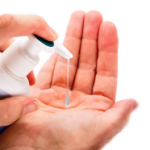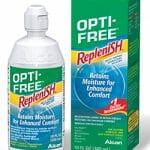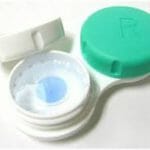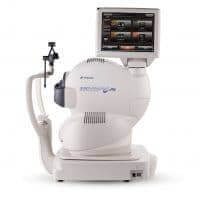 Wash your hands!
Wash your hands!
It’s pretty obvious that hand washing is important in contact lens hygiene. However, in a study on lens compliance, 55% of contact lens wearers admitted to not washing hands when handling contact lenses (1).

 Never, ever use tap water
Never, ever use tap water
Tap water is not germ-free. There are many kinds of germs in water that can cause eye infections, but a particularly dangerous germ— called Acanthamoeba —is commonly found in tap water (2). This germ can cause a very severe type of eye infection called Acanthamoeba keratitis.

 Rub ‘n’ Rinse
Rub ‘n’ Rinse
Time is precious but would you use a mouthwash instead of brushing your teeth? Of course not! Rubbing contact lenses in your lens solution and then rinsing is the most effective way of removing deposits before soaking the lenses in your solution. Even though you may have previously seen labels on solution bottles sayng ‘no rub’, these instructions have been proven to be incorrect (3).

 Put a lid on it!
Put a lid on it!
More than 1 in 10 contact lens wearers fail to close the lid tight on contact lens solutions (4). Keeping the lid on contact lens solutions is important to avoid contamination and maintain the disinfecting power of lens solutions.

 Don’t top up liquids
Don’t top up liquids
30% of contact lens wearers admit to ‘topping-up’ existing solution (soome of the time) in their lens case (4). Why is this a risk? Well, put simply, solutions are made of specific concentrations of chemicals that kill germs. If you dilute the solution it will not kill all harmful germs. Once solution has been used, it no longer has the same strength to kill germs, so when you top-up, you’re essentially diluting the solution and therefore increasing your risk to serious eye infection.

 Don’t forget the case
Don’t forget the case

 Stick to the replacement schedule
Stick to the replacement schedule

 Sleeping & Swimming in lenses?
Sleeping & Swimming in lenses?
Sleeping in contact lenses increases the risk of microbial keratitis and other complications. Research has shown that the relative risk of so-called corneal infiltrative events increases by 7.1 times (5). We don’t advocate sleeping in lenses unless you have specifically been placed on a continuous lens wear plan and the risks have clearly been explained.
Swimming (like tap water) also significantly increases the risk of serious infection from an organism called Acanthameoba keratitis (6). If you want to swim in contact lenses, wear swimming goggles and don’t go underwater.

 Lens A + Solution B ≠ Lens A + Solution C
Lens A + Solution B ≠ Lens A + Solution C
Temptations to swap contact lens solution with bulk buys and special offers on contact lens solutions are everywhere. However, different lens and solution combinations have been shown to result in different levels of comfort. Always use the solution recommended by your Optometrist as it will have been carefully chosen to complement your eyes and contact lenses.
 FEEL, LOOK, SEE
FEEL, LOOK, SEE
There three questions every contact lens wearer ask themselves before applying contact lenses.
Ask yourself, do your eyes FEEL good? If you’re experiencing any discomfort or pain, don’t wear contact lenses.
Do your eyes LOOK good? If your eyes appear red or swollen, don’t wear contact lenses.
Can you SEE normally? If your vision is hazy or if your vision has deteriorated over the last few days, don’t wear contact lenses.

References
1. Dumbleton KA, Spafford MM, Sivak A, Jones LW. Exploring compliance: a mixed-methods study of contact lens wearer perspectives. Optom Vis Sci. 2013 Aug;90(8):898-908.
2. Visvesvara GS, Moura H, Schuster FL. Pathogenic and opportunistic free-living amoebae: Acanthamoeba spp., Balamuthia mandrillaris, Naegleria fowleri, and Sappinia diploidea. FEMS Immunol Med Microbiol. 2007;50(1):1-26.
3. Zhu H, Bandara MB, Vijay AK, Masoudi S, Wu D, Willcox MD. Importance of rub and rinse in use of multipurpose contact lens solution. Optom Vis Sci. 2011 Aug;88(8):967-72.
4. http://www.academyofvisioncare.com/files/documents/The%20Science%20of%20Compliance%20-%20latest.pdf
5. Radford CF, Minassian DC, Dart JKG. Acanthamoeba keratitis in England and Wales: incidence, outcome, and risk factors. Br J Ophthalmol 2002;86:536-542.
6. Morgan PB, Efron N, Brennnan NA, Hill EA. Risk Factors for the Development of Corneal Infiltrative Events Associated with Contact Lens WearIOVS, 2005, Vol.46, 3136-3143.









